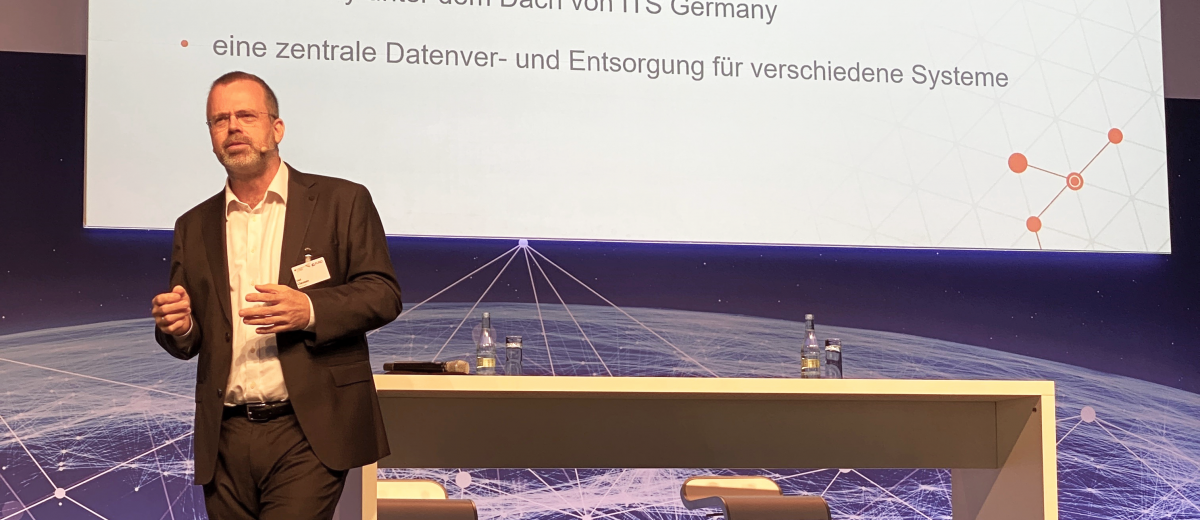On September 13 and 14, 2022, the mFUND conference took place in Berlin. Olaf Clausen, managing partner of AMCON and an active member of the HUSST working group, attended the event and presented the HUSST4Maas project.
Olaf, you attended the mFUND conference in Berlin in September. What kind of conference was it?
mFUND is an innovation initiative that supports research and development projects focused on digital, data-driven applications for the mobility of the future. The Federal Ministry for Digital and Transport (BMDV) supports projects through mFUND that demonstrate how technological progress and digital innovation can help rethink mobility. At the conference, currently funded projects were presented to the professional audience — including the HUSST4Maas project, which I had the opportunity to present.
What was your presentation about?
The project essentially focuses on two main aspects:
First, the extension of the manufacturer-independent standard interface (HUSST) for exchanging fare and result data in public transport (ÖPNV). Now, fares from the parking and city toll sectors can also be represented using this interface.
Second, a prototype converter was developed that can process fare data in the HUSST format for the product and control module (PKM) of (((eTicket Deutschland.
Did you carry out the project alone?
No. AMCON was the consortium leader in the project and took on the role of presenting it. The project is carried out together with the following project partners:
- ALMEX GmbH
- Fachhochschule Potsdam
- highQ Computerlösungen GmbH
- ICA Traffic GmbH
- International School of Management GmbH
- ITS Germany e.V.
- krauth technology GmbH
In the photo, you look very passionate about the topic. Is that true?
Yes, absolutely. I consider the transformation of transportation to be very important for society, and I am proud that through this project we can contribute to it. Many factors play a big role in this. The simple exchange of data is, for example, an important aspect. It’s difficult to visually represent because there are no flashy apps or websites to showcase — rather, we are working in the engine room of the transportation transition. Most processes rely on a large amount of data. By standardizing and simplifying data exchange, public transport becomes easier and more attractive. If we consider the transportation transition as a huge ship, then everything must work smoothly in the engine room for it to be steered effortlessly.

